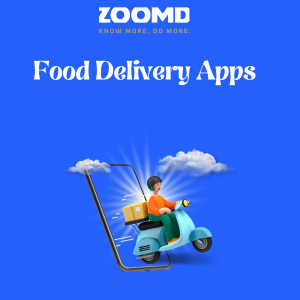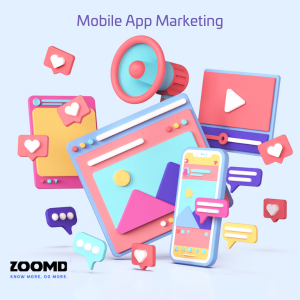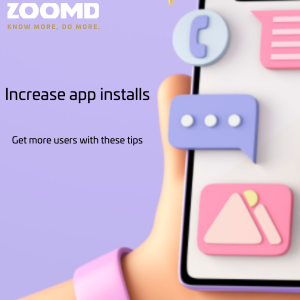Are you ready for the back-to-school season? If you’re a mobile app marketer or a user acquisition manager, you know how important this time of the year is for your business. Back to school is not only a major shopping event but also a great opportunity to connect with your target audience and grow your app user base.
Back-to-school season is an exciting time of year for students as they prepare to return to the classroom and stock up on supplies. It’s also an exciting time for marketers, as this time of year provides the perfect opportunity to engage with customers with an RTM tactics and content, making app install campaigns more interesting on the planning side with great creatives. That’s why back-to-school marketing campaigns are essential for any business that wants to reach out to its target audience and improve app install rates and basically achieve better ROAS.
But how can you make the most of this season and stand out from the competition? Here are some best practices to help you plan and execute a successful back-to-school campaign for your mobile app or essentially any business.
Start Early
One of the key factors for a successful back to school campaign is timing. You don’t want to wait until the last minute to launch your campaign, because by then, your potential customers may have already made their purchasing decisions elsewhere or downloaded other apps.
Instead, you want to start your user acquisition or retargeting campaign early in the summer, when people are still in the planning and research phase. This way, you can capture their attention and interest, and bring them to your digital assets (such as your website or app store page) where they can register, download your app, or sign up for your newsletter. Also, make sure that different countries start their school season at a different time. For example, many schools in the United States start their new academic year in late August or early September, so launching a back-to-school campaign in late July or early August can help you reach your target audience.
By doing this, you can build a relationship with your prospects and nurture them with relevant and personalized messages until they are ready to buy. You can also use this opportunity to educate them about your app’s features and benefits, and how it can help them with their back-to-school needs.
According to a report by eMarketer, 62% of US internet users start their back-to-school shopping at least one month before school starts. And according to a survey by RetailMeNot, 69% of shoppers use their smartphones to research products before buying them. This means that you have a huge window of opportunity to reach and engage your prospects before they make their final decisions.
Use Creative that Showcases Your Products
Another important element of your back-to-school campaign is the creativity assets you’ll use. You want to make sure that your ads and banners are eye-catching, engaging, and relevant to your audience and the season. Different creatives are in mind for the first initiative of the user acquisition campaign, and a different one with more actual offers in the re-engagement campaign, once the users already have your app installed.
One of the best ways to do this is to showcase your back-to-school products in your creative. For example, if you have an app that sells clothing or accessories, you can feature some of the latest trends and styles that are popular among students within the creative sets of the ads. If you have an app that offers educational or productivity tools, you can highlight how your mobile app can help students with their homework, assignments, or exams.
By showing your products in action, you can demonstrate their value and appeal to your prospects. You can also create a sense of urgency and FOMO (fear of missing out) by adding countdown timers, limited-time offers, or exclusive discounts to your creative.
According to a study by Facebook IQ, 56% of US shoppers say that seeing a product in use influences their purchase decision. And according to a report by Criteo, ads with dynamic creative optimization (DCO) have 40% higher click-through rates (CTR) than static ads. This means that by using creative that showcases your products, you can increase your chances of getting more clicks and conversions.
Put Together a Killer Bundle or a Special Promotion
Finally, one of the most effective ways to boost your back-to-school campaign is to offer a killer bundle or a special promotion for your app. This can be a great way to incentivize your prospects to download your app and make a purchase.
For example, you can offer a bundle of products or services that are relevant for the back-to-school season, such as a subscription plan, an upgrade, or an add-on. You can also offer a special promotion, such as a free trial, a discount code, or a gift card.
By offering a bundle or a promotion, you can increase the perceived value of your app and create a win-win situation for both you and your customers. You can also leverage social proof and word-of-mouth by encouraging your customers to share their experiences with their friends and family.
According to a report by App Annie, 65% of US smartphone users say that they are more likely to download an app if it offers a free trial or a discount. And according to a study by Nielsen, 92% of consumers trust recommendations from friends and family more than any other form of advertising. This means that by offering a bundle or a promotion, you can boost your downloads and referrals.
Finally, it’s important to measure the success of your back-to-school marketing campaigns. Like any campaign you would normally run, but this special season promotion can teach you more for future campaigns you will consider doing. You should track the number of customers that engaged with your campaigns, as well as the number of sales that were generated from those campaigns. This will help you determine what strategies were successful and which ones need to be improved. What are the products you should invest in for the next shopping season, what were the media channels that proved themselves the most, and what messaging should be refreshed moving forward.
Conclusion
Back to school is a huge opportunity for mobile app marketers and user acquisition managers. By following these tips and best practices, you can create a back-to-school campaign that will help you reach and convert more customers, grow your user base, and increase your revenue.
Overall, back-to-school marketing campaigns can be a great way to take advantage of this theme and create a new campaign that can grow your user base, or use this special promotion to re-engage with your current database and offer them something more relevant for them.
So what are you waiting for? Start planning your back-to-school campaign today and get ready for the big season!
Contact our team to learn how we can scale your app.


